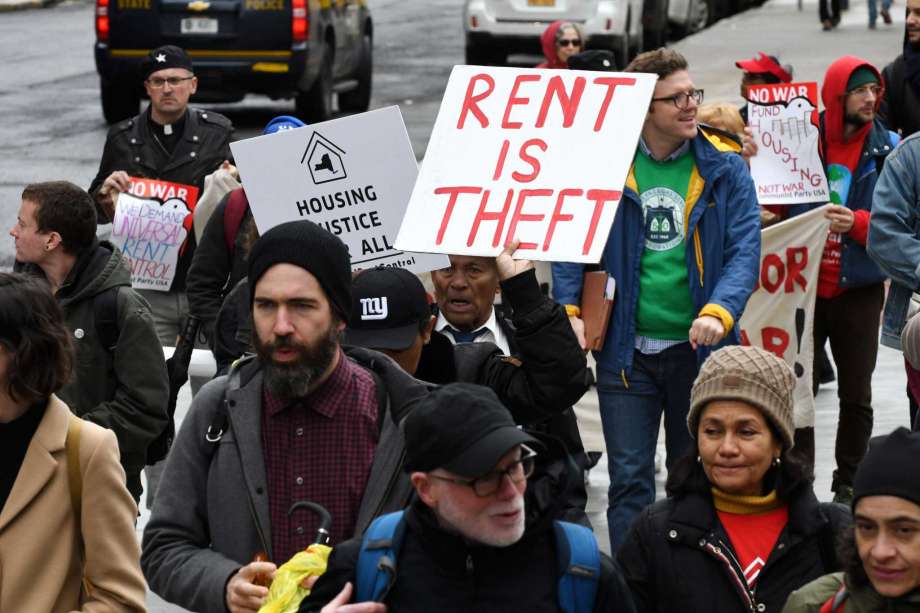Tenant Rights Under Fire: New Rent Regulations And Their Impact

Table of Contents
Understanding the New Rent Control Measures
The implementation of new rent control measures signifies a significant shift in the balance between landlords and tenants. These regulations aim to address concerns about affordability and displacement, but their impact is multifaceted and requires careful consideration.
Limits on Rent Increases
Many regions have imposed strict limits on annual rent increases. These caps are often calculated as a percentage of the previous year's rent or are tied to specific inflation indices. For example, some cities may limit annual rent increases to 3%, while others may have more stringent caps, particularly for rent-stabilized units.
- Percentage limitations on annual rent increases: These vary widely depending on location and the type of rental unit. Some jurisdictions allow for higher increases in certain circumstances, such as when significant capital improvements are made to the property.
- Specific examples of regions with stricter rent control: Cities like New York City and San Francisco have long histories of rent control, with regulations often more extensive than those in other areas. However, new regulations are emerging in previously unregulated markets as well.
- Exemptions for certain types of properties or landlords: Some regulations exempt newly constructed buildings or properties owned by small landlords from rent control measures. These exemptions can significantly impact the availability of affordable rental housing.
Eviction Protections
Enhanced eviction protections are a key feature of many new rent regulations. Landlords now face stricter requirements for evicting tenants, aiming to prevent arbitrary displacement.
- Just cause eviction requirements: This means landlords can only evict tenants for specific, legally defined reasons, such as non-payment of rent, violation of lease terms, or necessary repairs. Arbitrary evictions are largely prohibited.
- Increased notice periods for evictions: Tenants are given more time to find alternative housing before eviction can proceed, giving them more opportunity to avoid displacement.
- Procedures for challenging wrongful evictions: Regulations often outline clear procedures for tenants to challenge evictions they believe are unlawful, allowing them to seek legal redress.
Rent Stabilization Programs
Many jurisdictions are expanding or creating rent stabilization programs designed to protect tenants from rapid rent increases. These programs often target specific types of rental units or income levels.
- Eligibility criteria for rent stabilization programs: Eligibility criteria vary by location and may include factors such as the age of the building, the tenant's income level, or the type of rental unit.
- Benefits of being included in a rent stabilization program: Tenants in rent-stabilized units are typically protected from excessive rent increases and enjoy greater security of tenure.
- Potential drawbacks or limitations of such programs: These programs may have limitations, such as restrictions on subletting or rent increases allowed for capital improvements. They also may not cover all rental units within a jurisdiction.
The Impact on Landlords
The new rent regulations create significant challenges for landlords, impacting their financial stability and operational capacity.
Reduced Rental Income
Rent control measures directly impact a landlord's rental income, potentially reducing their ability to cover operating costs and make necessary repairs.
- Difficulty covering operating costs and property maintenance: Reduced rental income makes it difficult for landlords to maintain properties, leading to potential disrepair and impacting tenant living conditions.
- Potential for decreased investment in rental properties: The reduced profitability of rental properties may deter investment in new construction or renovations, potentially exacerbating housing shortages.
- Impact on the availability of rental units: Some landlords may choose to sell their properties or remove them from the rental market altogether, further reducing the availability of affordable housing.
Increased Legal Complexity
Navigating the new regulations adds significant complexity for landlords, requiring a higher degree of legal and administrative compliance.
- Increased burden of compliance with new regulations: Landlords must understand and adhere to the complex requirements of new rent regulations, potentially requiring specialized legal or administrative expertise.
- Higher legal fees associated with evictions or disputes: Disputes related to rent control and evictions are likely to increase, leading to higher legal costs for landlords.
- Potential for penalties for non-compliance: Failure to comply with rent regulations can result in significant penalties, including fines and legal action.
Resources and Further Support for Tenants
Navigating the complexities of tenant rights requires access to reliable information and support.
Tenant Rights Organizations
Many non-profit organizations advocate for tenant rights and provide crucial legal aid and advice.
- Names of key organizations providing tenant support: These organizations vary by region, but many local tenant unions or advocacy groups provide support and resources.
- Links to their websites for easy access to information: Finding local tenant organizations through online searches is often straightforward.
- Types of assistance offered (legal advice, mediation, etc.): These organizations may offer free or low-cost legal advice, mediation services, and educational resources.
Governmental Resources
Governmental agencies at the local, state, and federal levels often provide information on tenant rights and regulations.
- Links to relevant government websites: Government websites often provide detailed information on tenant rights, landlord responsibilities, and dispute resolution processes.
- Information about available resources and support programs: Government agencies may offer financial assistance, rental assistance programs, or other support for tenants.
Conclusion
The changing landscape of rent regulations significantly impacts tenant rights and requires careful attention. Understanding the nuances of new rent control measures, eviction protections, and rent stabilization programs is crucial for both tenants and landlords. By utilizing the resources outlined above and staying informed about updates, you can effectively navigate this complex environment. Protecting your tenant rights is paramount; don’t hesitate to seek legal counsel if needed. Learn more about your specific tenant rights and ensure you are well-informed about the latest regulations in your area.

Featured Posts
-
 Promotion Eclair Samsung Galaxy S25 Ultra 256 Go A 1196 50 E
May 28, 2025
Promotion Eclair Samsung Galaxy S25 Ultra 256 Go A 1196 50 E
May 28, 2025 -
 San Diego Padres Welcome Back Luis Arraez And Jason Heyward
May 28, 2025
San Diego Padres Welcome Back Luis Arraez And Jason Heyward
May 28, 2025 -
 Tyrese Haliburtons Father Back At Pacers Games Following Nba Ban
May 28, 2025
Tyrese Haliburtons Father Back At Pacers Games Following Nba Ban
May 28, 2025 -
 Logan Streaming Release Hugh Jackmans Masterpiece Finds A New Home This April
May 28, 2025
Logan Streaming Release Hugh Jackmans Masterpiece Finds A New Home This April
May 28, 2025 -
 Check Todays Personal Loan Interest Rates And Apply Now
May 28, 2025
Check Todays Personal Loan Interest Rates And Apply Now
May 28, 2025
